Although I have a lot of variations of banana bread on this site, I have never posted a classic, straightforward recipe for banana bread until now.
I always end up with leftover, overripe bananas, and made too much banana bread before I started this blog. I like banana bread but not as much as Alex does, and didn't want to revisit it to write about it.
But recently I wanted to make regular, plain ol' banana bread to take to a lunch playdate to feed a lot of kids. And man, was it fantastic. I've been depriving myself.
What makes this banana bread great? It's a simple, one-bowl recipe made with half whole what flour, giving us a moist bread with lots of flavor.
Jump to:
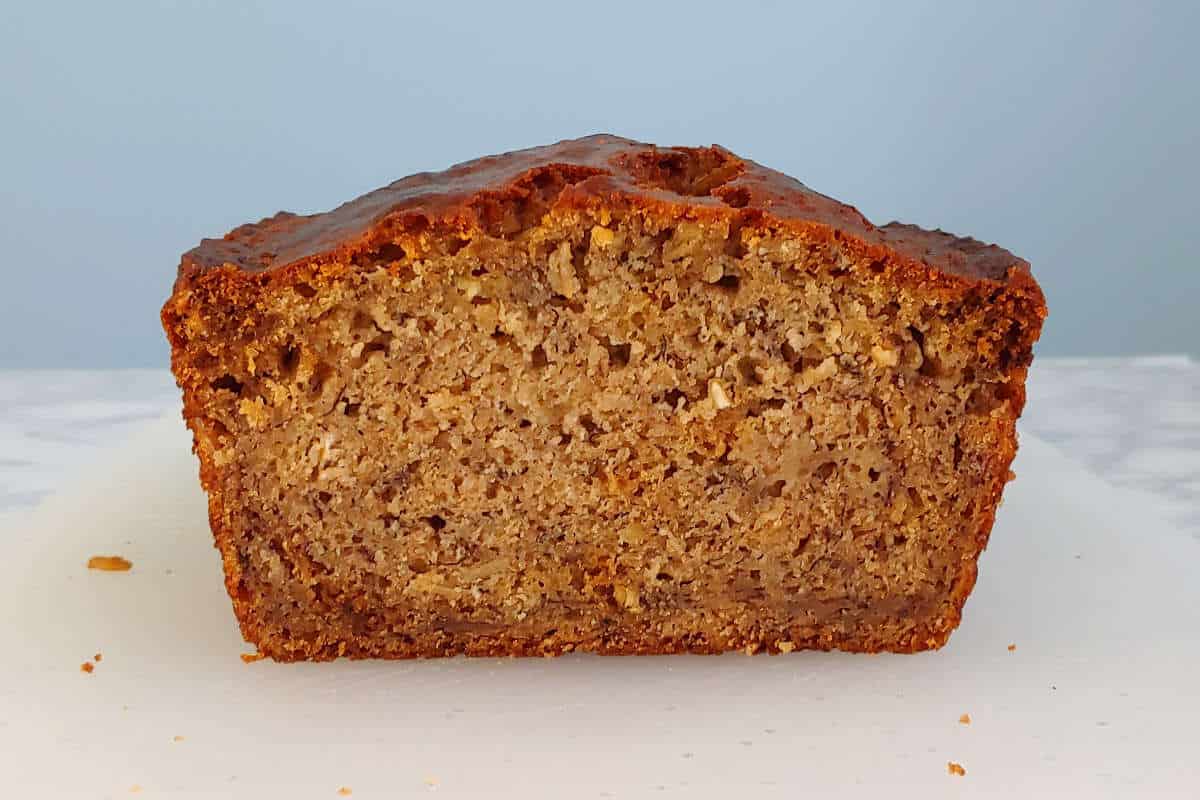
[This post contains affiliate links. I may make a commission for purchases made through links on this post. As an Amazon Associate, I earn from qualifying purchases.]
A Brief History of Banana Bread
Did you realize that banana bread is the most searched for recipe on the Internet? (At least, that's what King Arthur Flour says.)
According to King Arthur Flour, the popularity of banana bread arose during the Great Depression, when people refused to throw out even overripe/"rotten" produce. The article then describes how the bread has changed to suit the tastes of each decade. Interesting stuff - to me, at least.
Originally, banana bread was much more bread-like in nature (much lower in fat and sugar) than what we experience now. I've always thought that banana bread was more of a loaf cake (like a pound cake), but apparently that wasn't always the case.
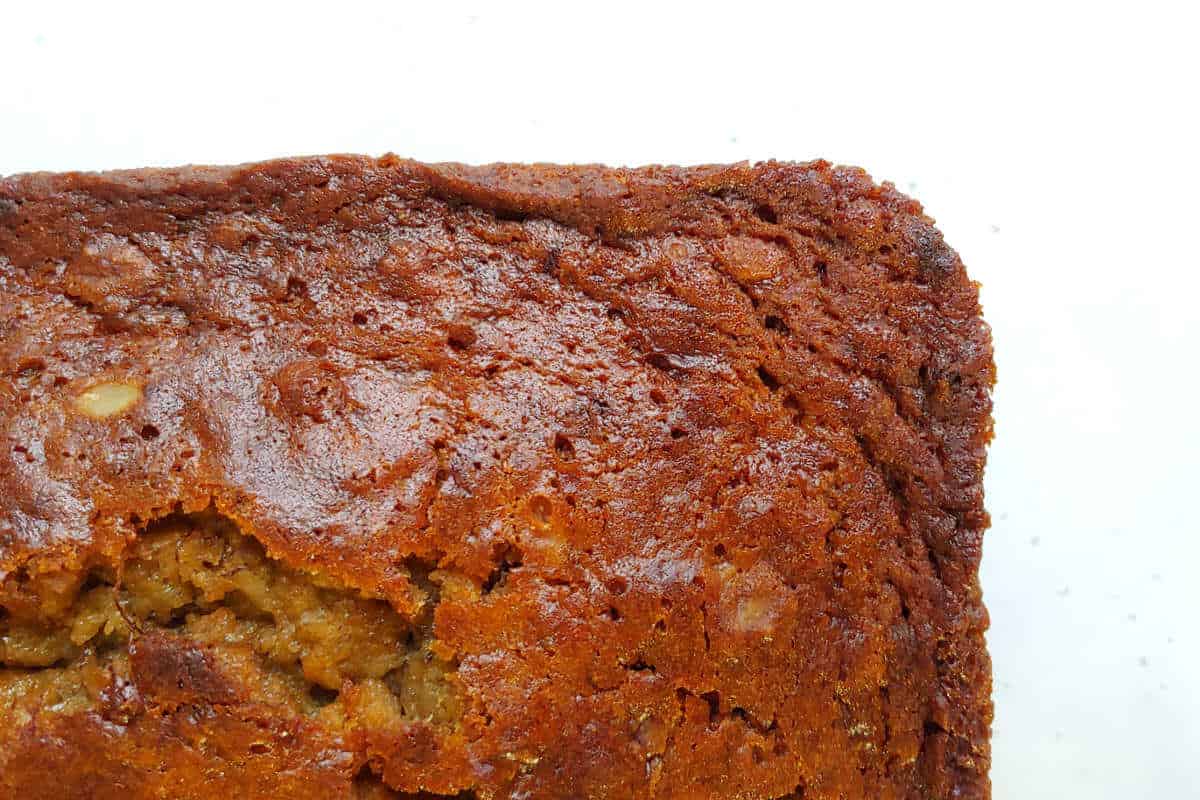
How to Make Great Banana Bread
This recipe originally came from the Betty Crocker Cookbook (affiliate link), but I've made some changes to it along the way.
How have I made it better? I added in some whole grain, for one thing. But that's not the best part!
It's now a one-bowl recipe - no electric mixer required. Just mix everything together, put it in a loaf pan, and bake it.
The first step is lowering your oven rack to the bottom position before you preheat the oven. Why? This 9x5 inch loaf is so dense, it bakes best close to the heating element. I'm not always such a stickler, but don't skip this.
Making the batter is simple. First, mash your overripe bananas. You can use a fork, but really a sturdy potato masher (affiliate link) is most efficient. I use mine for mashing up beans for tacos as well.
Next, use a whisk to mix in all the remaining wet ingredients.
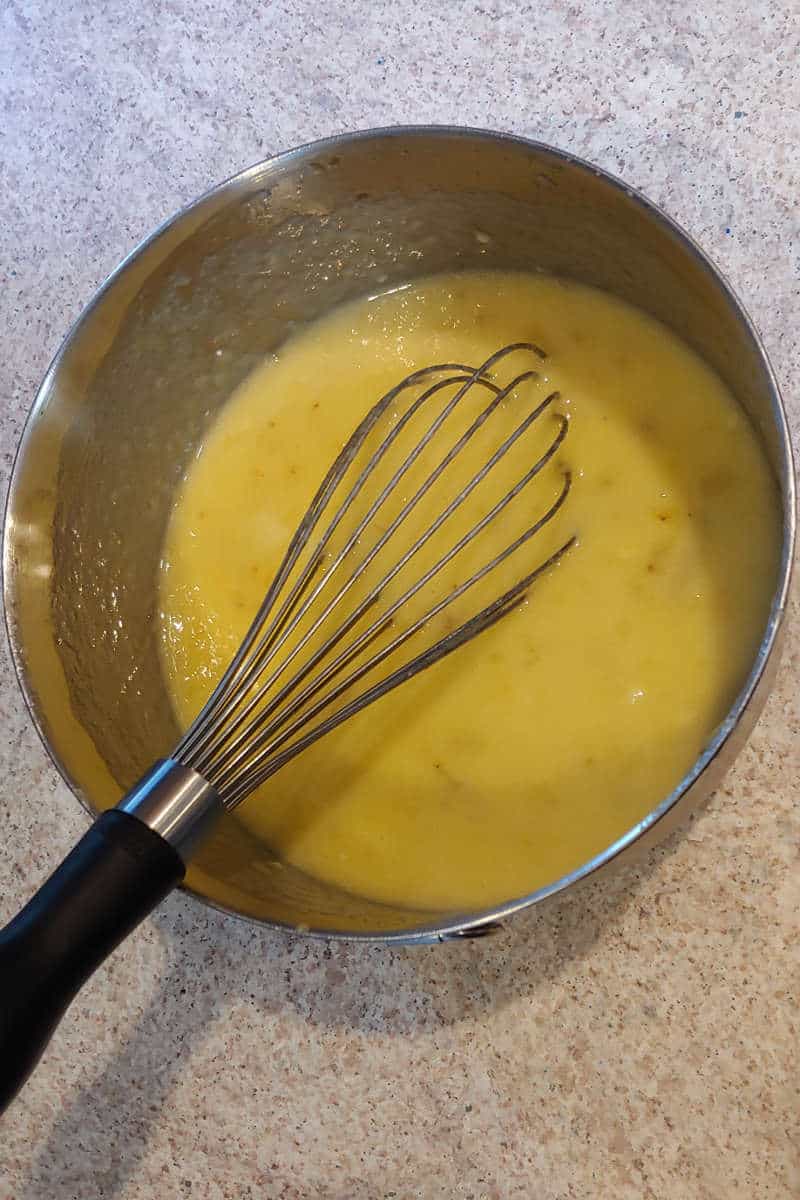
Use a rubber spatula to fold in the dry ingredients. Your batter may be lumpy, and that's ok. Make sure there's no clumps of flour, but otherwise don't overmix.
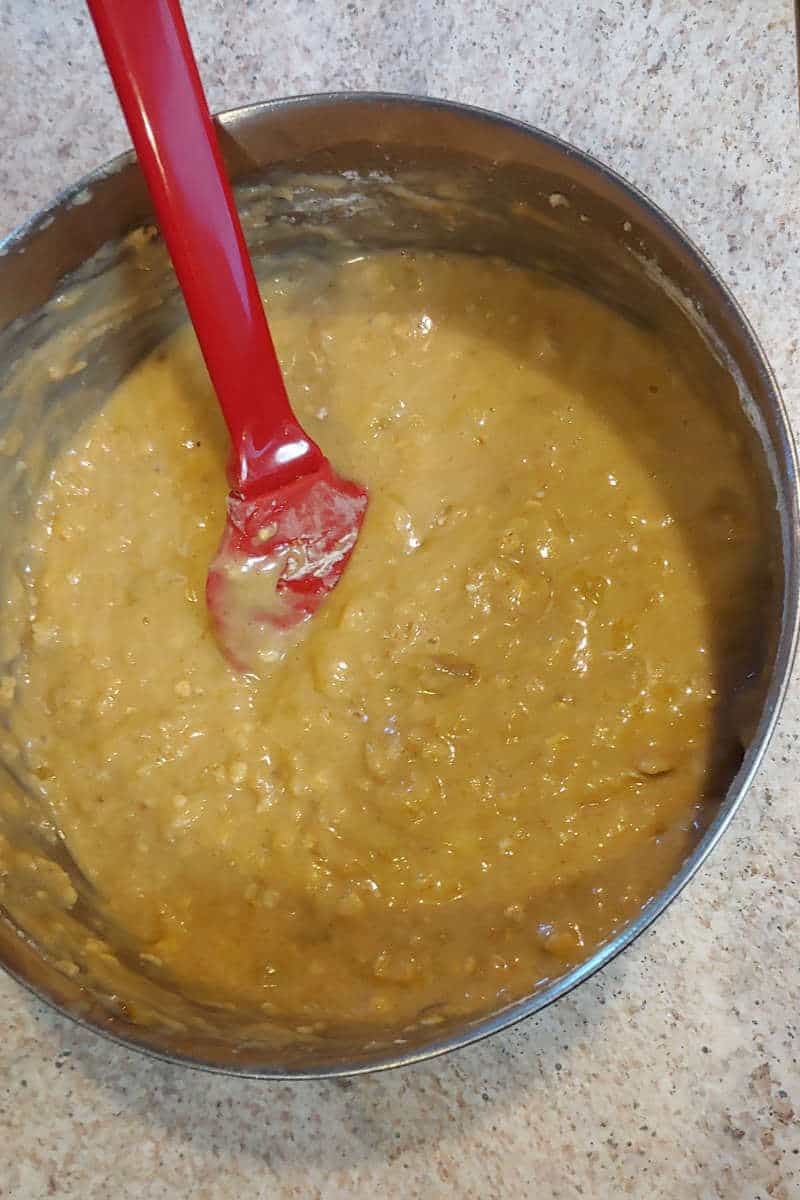
Pour your batter into a greased 9x5-inch loaf pan, and bake at 350F for 75 minutes. I have a shiny natural aluminum 9x5 inch loaf pan (affiliate link) from Nordicware that I love, and it bakes perfectly in this. Glass pans or darker pans will bake differently.
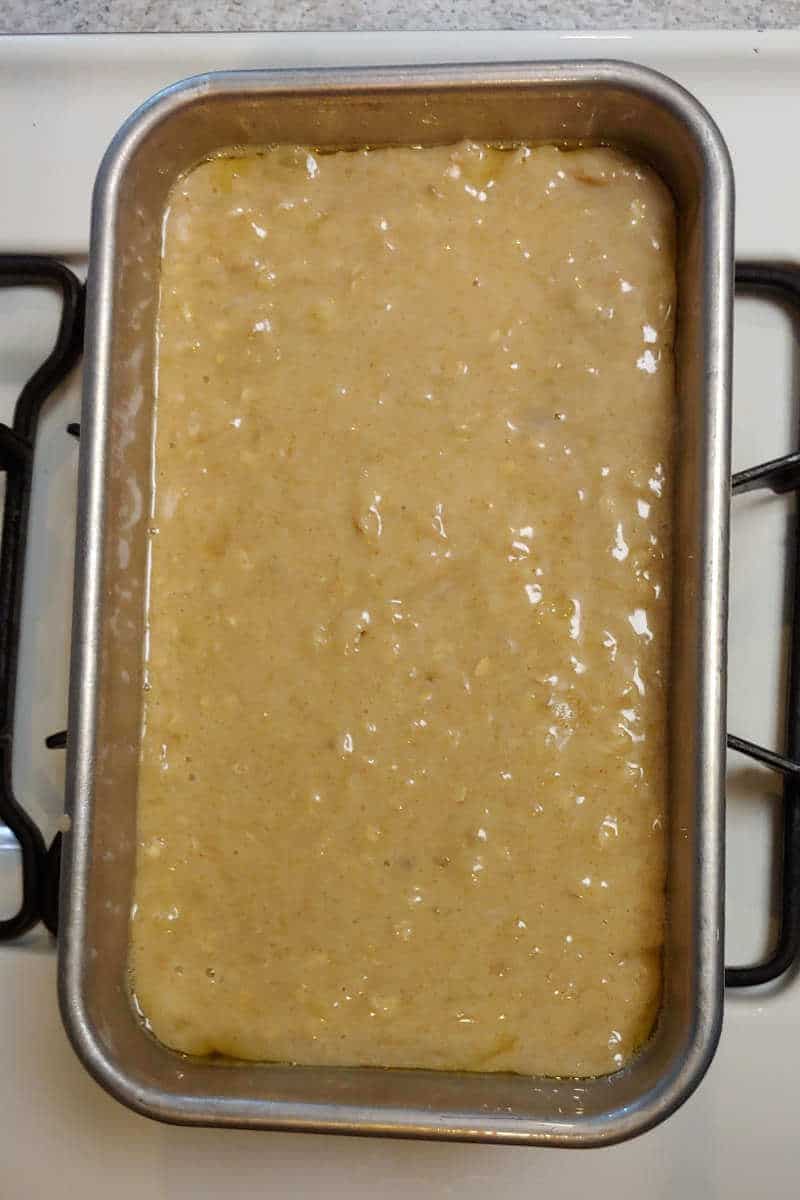
Let your baked bread cool in the pan for 10 minutes before turning it out onto a cooling rack to release extra steam. This is very important. Do it too soon, and your bread may stick. If you don't turn it out, your loaf will be soggy. (It's amazing how much steam condenses on my counter under the cooling rack!)
Cool bread for a few hours before serving. If it's evening and you don't want to cut it until morning, place the completely cooled bread back in the loaf pan and cover with a clean, folded kitchen towel. (Because I haven't cut it yet, mine has never dried out from storing it this way.) I recommend cutting it with a serrated bread knife (affiliate link), for the neatest lines and fewest crumbs.
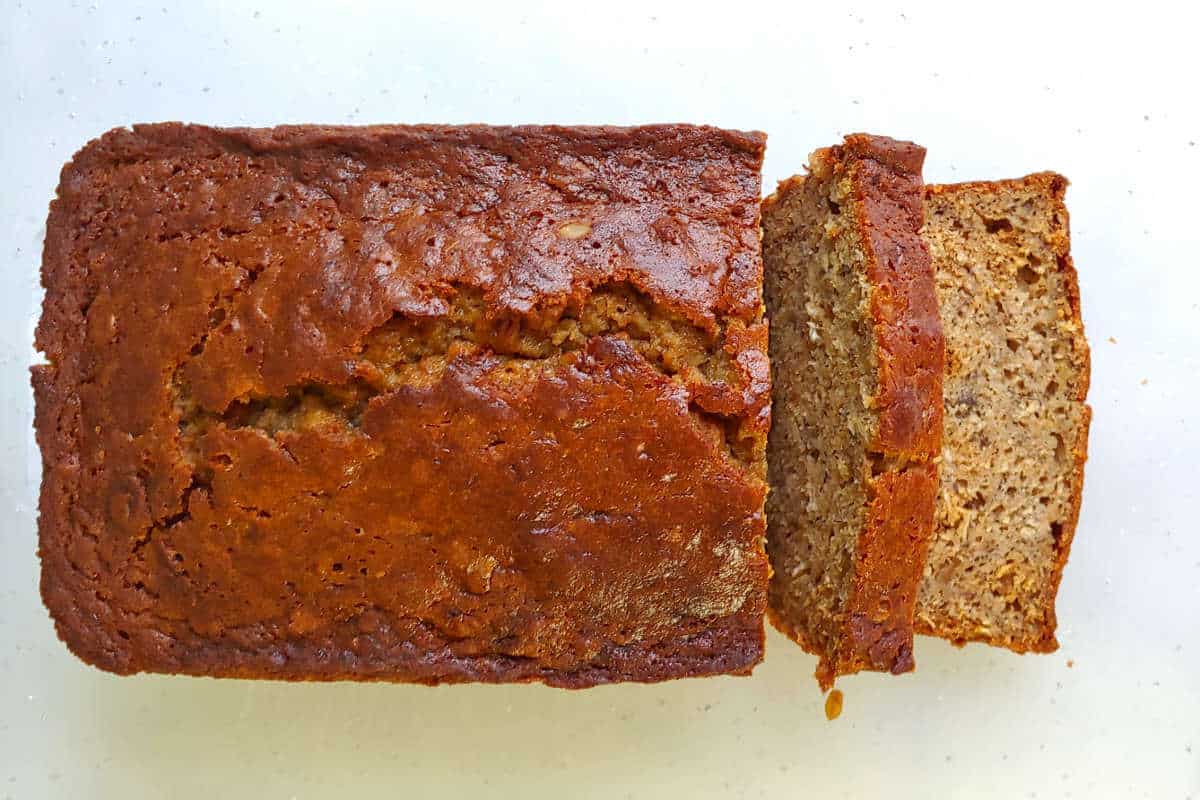
Ingredients
Why use overripe bananas? They are starchier and have more moisture than perfectly ripe bananas, which makes your bread more moist. Also, they're easier to mash.
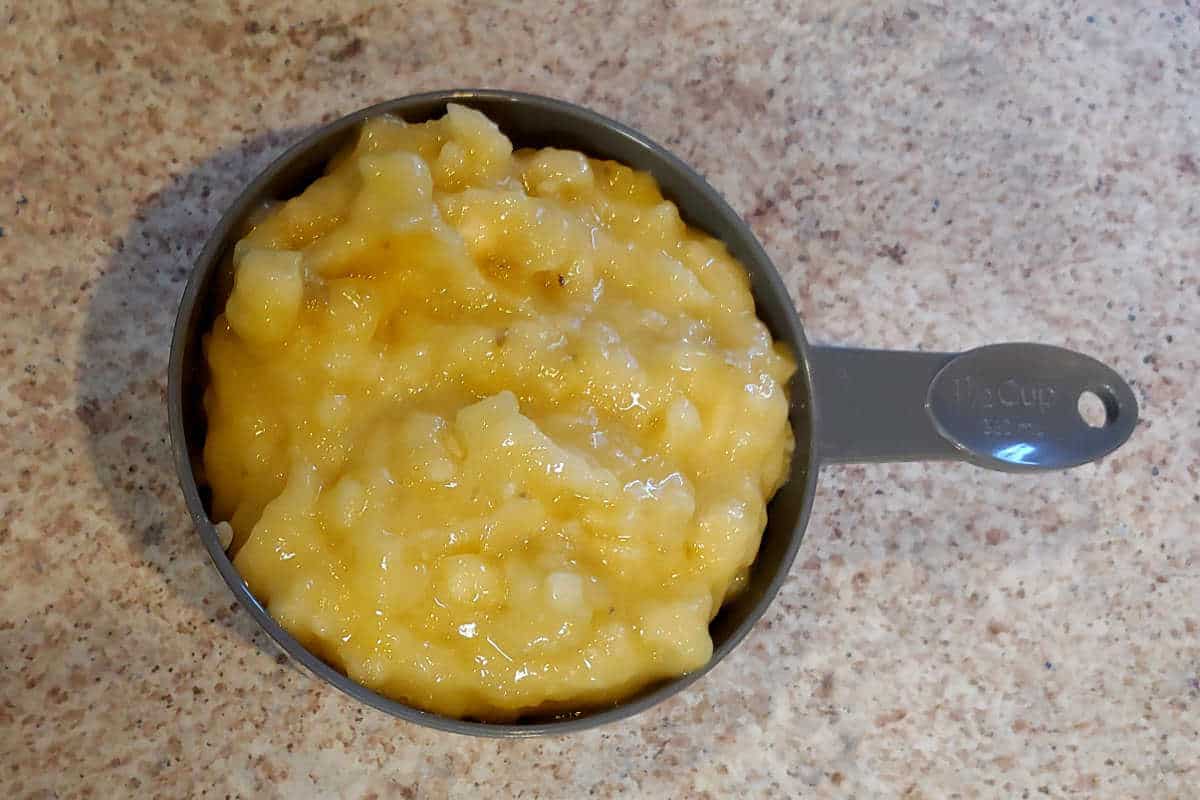
When my bananas become overripe, I stick them in the fridge, where they will keep for a few extra days without ripening further. If I haven't used them by then, I peel them and store them in a freezer bag. Then I can thaw them to bake with, whenever I'd like.
The original recipe originally took melted butter, but I've substituted in oil. (In my experience, melted butter always clumps up when it hits cold ingredients.) I use yogurt in the batter because I always have some around, but you can use buttermilk, or milk with 2 teaspoons of vinegar/lemon juice instead.
I make this with half whole wheat flour, which you don't even notice. I like to toss in some oats for some of the flour, but you can use all-purpose or whole wheat flour instead.
Some people love nuts in their banana bread. Feel free to add some! I recommend walnuts if using.
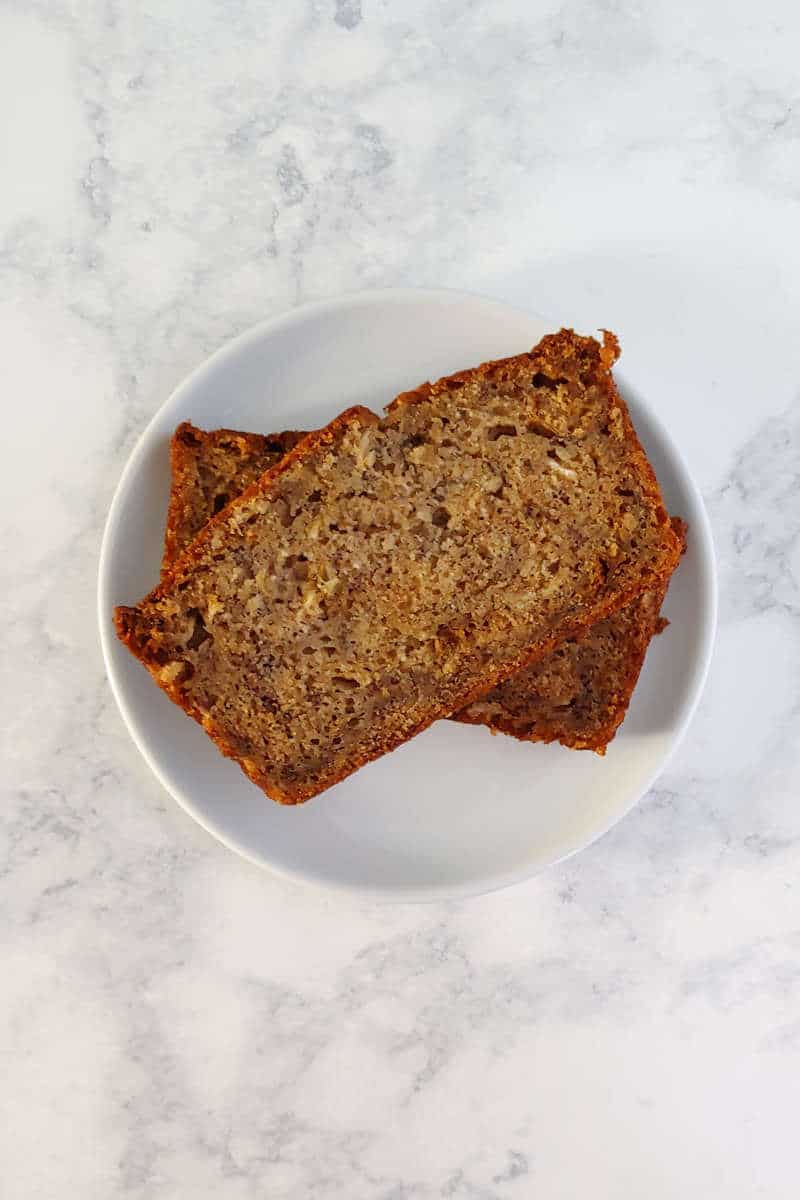
Serving Banana Bread
Banana bread stays moist for days. I cut mine up and store it in an airtight container. The top crust softens so it loses its delightful crunch, but otherwise the bread is still delicious.
This dense, moist bread is slightly sweet and full of flavor, so I eat it plain. That said, I know some people serve it with a dab of butter on it. You also couldn't go wrong with peanut butter or hazelnut spread! How do you eat your banana bread?
Want other recipes for leftover bananas? Try Banana-Raspberry Bread; slightly richer Jacked-Up Banana Bread (adapted from Smitten Kitchen); Banana Muffins with streusel, Banana Cupcakes with Peanut Butter Frosting, or Yeasted Banana Sandwich Bread (a personal favorite). Bananas not overripe? Try Roasted Banana Ice Cream.
Interested in other recipes? I save and share recipes I like or want to try on my Pinterest page - follow me there! You can also check out my Facebook page for more recipes and helpful tips. I'm also happy to try to help troubleshoot my recipes there.
Have you tried this recipe? Or have a question about it? Rate it or leave a comment below! (PS: rating my recipes helps other people find them, too!)
In the past:
One Year Ago: Cookie Bars!
Two Years Ago: Multigrain Sandwich Bread
Three Years Ago: Sprinkle Cookies
Five Years Ago: St. Louis Gooey Butter Cake (although this gooey butter cake recipe turned out better)
Seven Years Ago: Pear Bread with Walnuts
Nine Years Ago: Chocolate Zucchini Bread, Chocolate Scones, Pecan Pralines
📖 Recipe
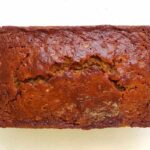
This classic banana bread recipe uses only one bowl. Although it's made with whole wheat, it stays moist and bursts with bananay flavor!
- 1 ½ cups bananas (mashed) (3 bananas, but see notes) (360 grams)
- 1 ¼ cups sugar (250 grams)
- ½ cup vegetable oil (112 grams) (can use melted butter for flavor)
- 2 eggs
- ½ cup yogurt (may use buttermilk, or 1 ½ teaspoons vinegar + ½ milk)
- 1 teaspoon vanilla
- 1 cup all-purpose flour (120 grams)
- 1 cup whole wheat flour (120 grams; can use all-purpose flour)
- ½ cup rolled oats (40 grams; may use ½ cup flour instead)
- 1 teaspoon baking soda
- 1 teaspoon table salt
- 1 cup chopped walnuts (optional)
-
Lower your baking rack to the bottom position in the oven (if using a 9x5-inch loaf pan). Preheat oven to 350F.
-
In a large mixing bowl, mash your bananas using a potato masher (affiliate link) (preferred) or a fork, until relatively smooth.
-
Add sugar, oil, eggs, yogurt, and vanilla. Use a whisk to mix until thoroughly combined, although you may still have lumps of banana if your mashed banana wasn't smooth.
-
Use a rubber spatula to fold in the flour, oats, baking soda, and salt. Mix until just combined; be sure there are no clumps of dry flour, but don't overmix. Your batter will be lumpy if using the oats. Stir in nuts, if using.
-
Pour batter into a greased 9x5-inch loaf pan. Bake on the bottom oven rack at 350F for about 75 minutes, until a toothpick inserted into the center comes out clean. If the top is getting too dark, cover it with aluminum foil while it finishes baking. (Rotate your pan if you must while the bread bakes, but don't jostle it or it will deflate and be dense and a little gummy.)
-
Let the bread cool for 10 minutes in the pan, then turn the bread out onto a wire cooling rack to let it release remaining steam (or else your bread will be soggy). Cool at least 2 hours before cutting. Cut with a serrated bread knife (affiliate link). Store in an air-tight container.
-
Divide batter into 24 greased muffin cups, filling about ⅔ full. Bake at 350F for 15-18 minutes, checking at 15, until a toothpick inserted into the center comes out clean. Cool for about 5 minutes before removing to a wire rack. (Leaving them in the muffin tin will cause the bottoms to become soggy.)
Banana sizes vary. My bananas usually weigh 19 ounces/546 grams (just over a pound) before peeling, and 12 ounces or between 360-400 grams after peeling.
I always peel and freeze bananas when they become overripe, then save them to make this bread. Pull your bananas from the freezer and thaw completely before mashing.
You can make this bread with only all-purpose flour if you want, but I like adding whole wheat flour and oats to make it healthier. 100% whole wheat flour also works, but your bread may become a bit more dense.
A note on pans: I use a natural aluminum loaf pan that is not non-stick. Glass or dark pans will bake differently. If using glass or very dark pans, reduce the temperature to 325F, and begin testing the bread at 60 minutes baking time. See more on dark vs. light pans here.
Baking this in the evening? Cool completely on a rack, then place back in the loaf pan and cover with a folded kitchen towel. Mine has always been moist the next morning since it hasn't been cut.
You can bake this in two 8x4 inch loaf pans for 60 minutes.
Nutritional information is an estimate based on banana bread made without nuts.
Recipe adapted from the Betty Crocker Cookbook (affiliate link)
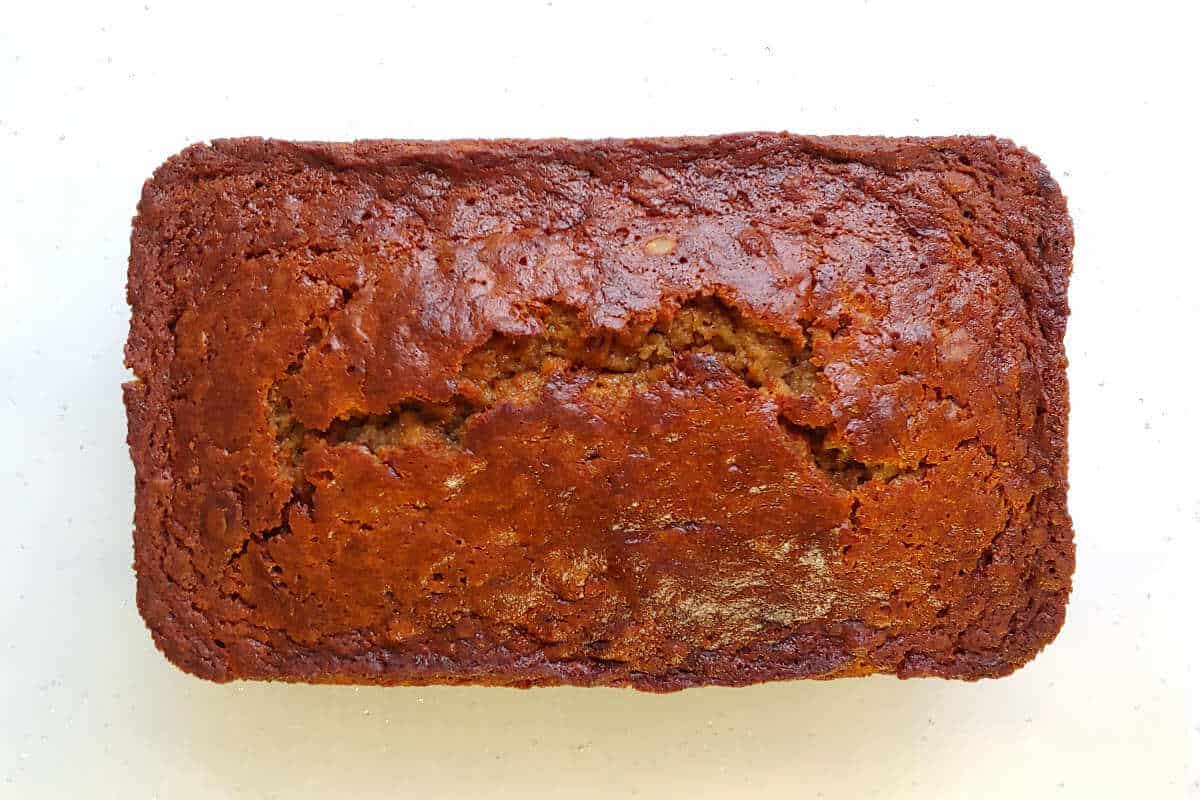
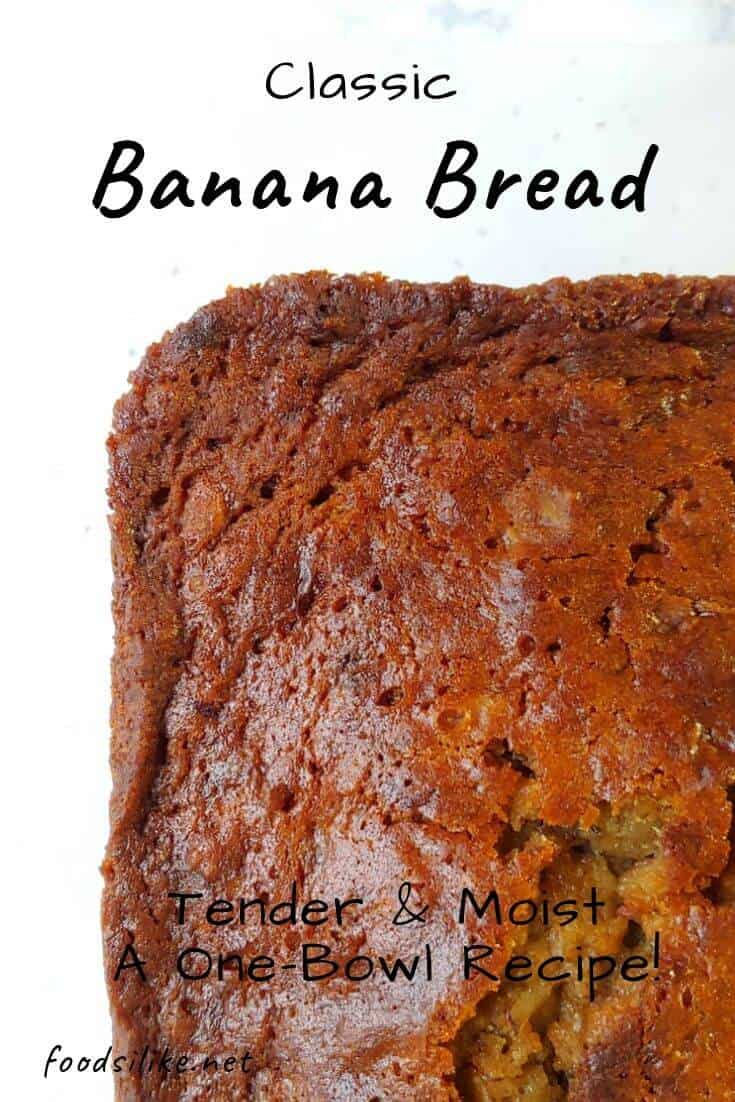



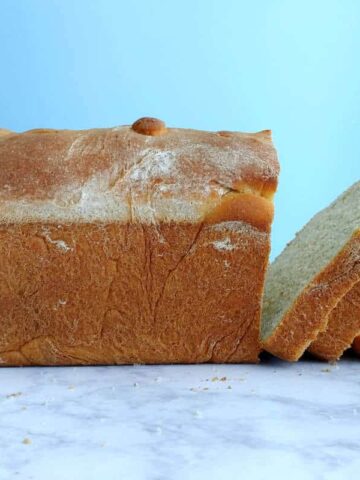
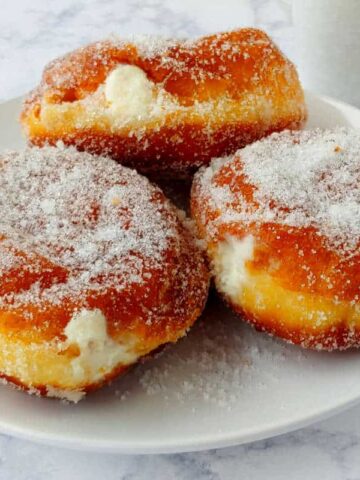
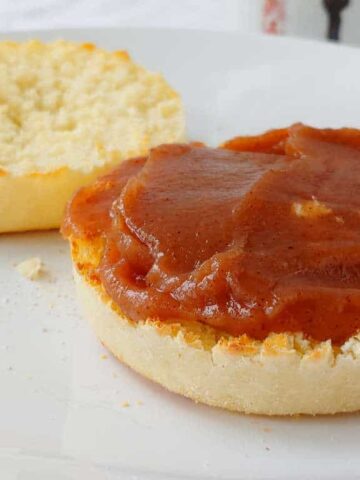
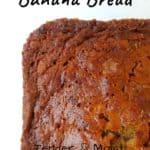
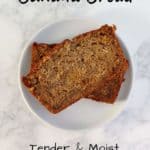
Leave a Reply